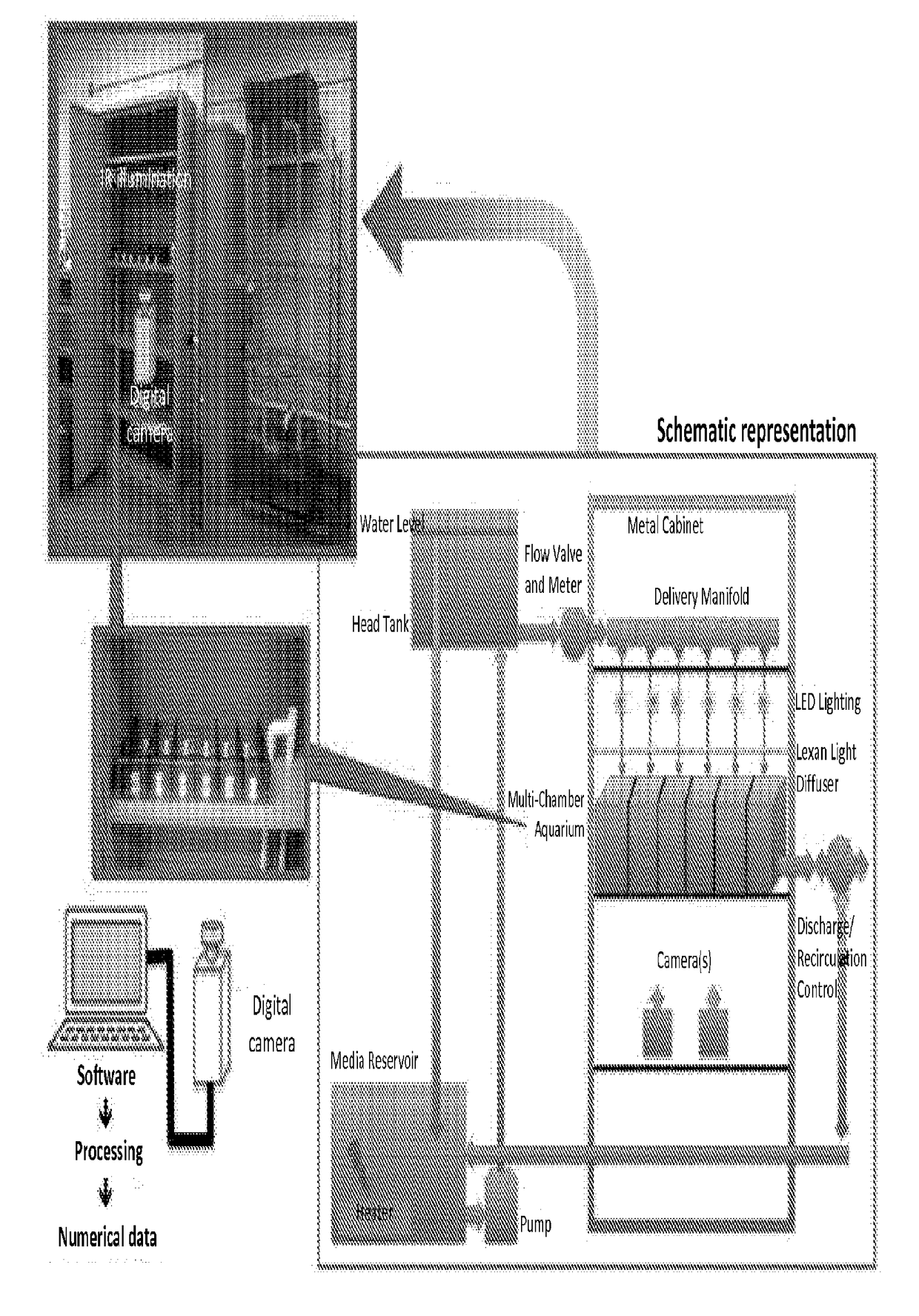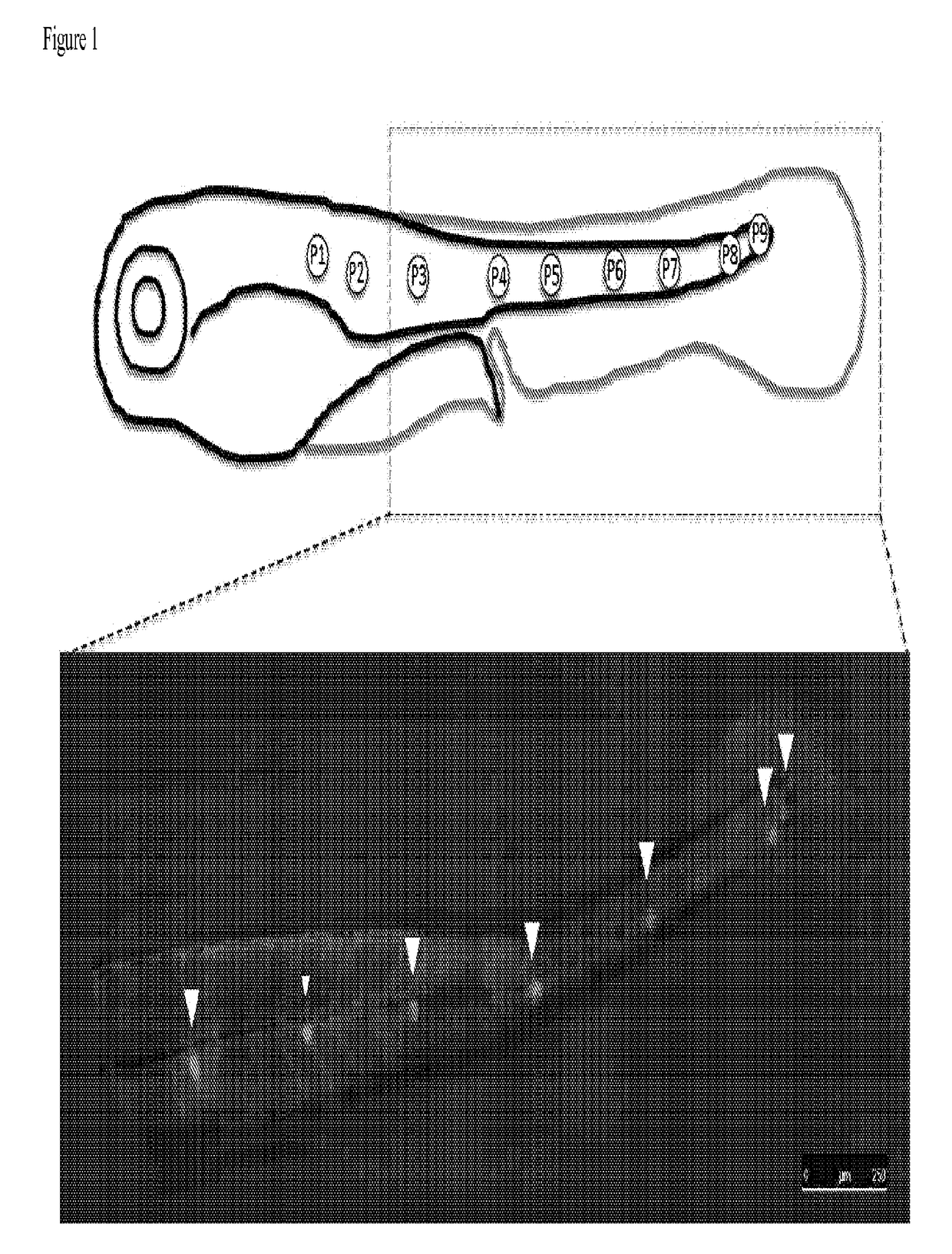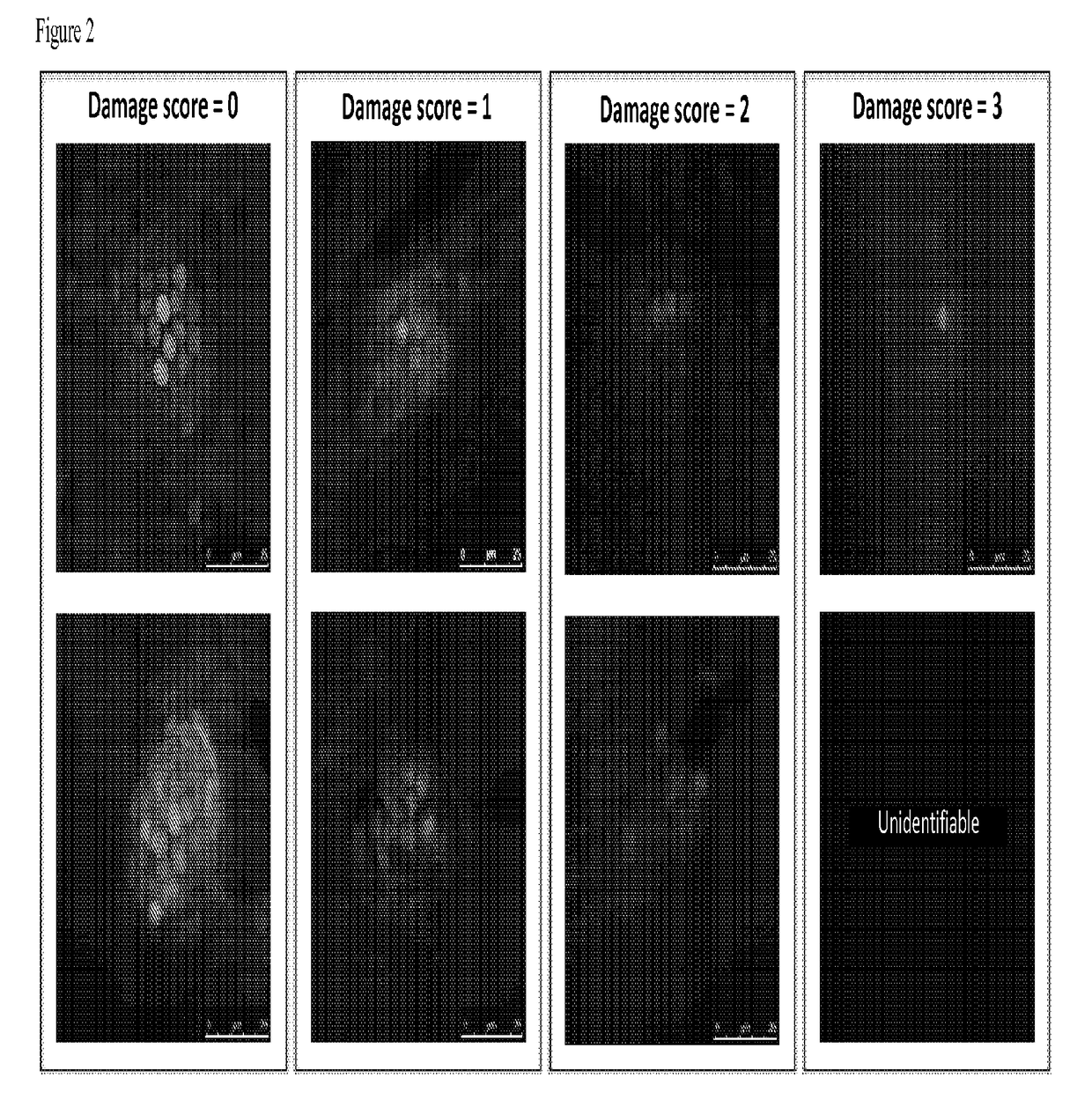Systems and methods for screening ototoxic, otoprotective, and otoregenerative compounds using aquatic models
a technology of applied in the field of systems and methods for screening compounds and materials for ototoxic and otoprotective activity, can solve the problems of 1.5 million veterans, unquantifiable personal and financial impact of recreational noise exposure, and difficult to study using translational model systems
- Summary
- Abstract
- Description
- Claims
- Application Information
AI Technical Summary
Benefits of technology
Problems solved by technology
Method used
Image
Examples
example 1
Methods
Zebrafish Care and Breeding
[0095]Zebrafish embryos were obtained from parings of AB Wild-type adult fish and maintained in E2 embryo medium (15.0 mM NaCl, 0.5 mM KCl, 1.0 mM MgSO4, 0.15 mM KH2PO4, 0.05 mM Na2HPO4, 1.0 mM CaCl2, 0.7 mM NaHCO3) (Westerfeld M. The Zebrafish Book. A guide for the laboratory use of Zebrafish (Danio rerio). 5th ed. University of Oregon Press. Eugene; 2007. Chapter 3, Embryonic and Larval Culture; p.3.1-3.104) at a density of 50 embryos per 90 mm petri dish. All zebrafish were housed in a Zebrafish Aquatic Housing System (Aquaneering, Inc., San Diego, Calif., U.S.A.) located in the University's animal care facility. Environmental conditions: Light / Dark cycle: 14 h / 10 h. Water temperature was controlled at 28.5±0.5° C. The University's Institutional Animal Care and Use Committee approved all animal procedures.
Anatomical Assay
[0096]Following the drug exposure (see below for detailed methods), larvae were fluorescently stained / labeled in embryo medium ...
example 2
[0109]This example demonstrates that small molecule activation of the NRF2 pathway protects zebrafish hair cell anatomy and function. Sulforaphane, a naturally occurring molecule within the isothiocyanate group of organosulfur compounds, is present within cruciferous vegetables such as broccoli. Low doses of SF induce production of antioxidant enzymes such as glutathione transferases, UDP-glucuronyltransferase, NAD(P)H:quinone oxidoreductase I and heme oxygenase-1 (HO-1) via NRF2 mediated activation of ARE promoters upstream from their genes—thereby allowing a diverse array of electrophilic and oxidative toxicants to be eliminated in a coordinated manner. Four-and-half dpf larvae were incubated in sulforaphane at a concentration of 10 μM for 12 hours and subsequently incubated for 4 hours in 1000 μM cisplatin (SF10 / Cis 1000). An SF-alone (SF10 / Cis 0) group and DMSO vehicle controls (DMSO / Cis 1000; DMSO / Cis 0) were also tested. To assess the otoprotective effects of SF on hair cell a...
PUM
 Login to View More
Login to View More Abstract
Description
Claims
Application Information
 Login to View More
Login to View More - R&D
- Intellectual Property
- Life Sciences
- Materials
- Tech Scout
- Unparalleled Data Quality
- Higher Quality Content
- 60% Fewer Hallucinations
Browse by: Latest US Patents, China's latest patents, Technical Efficacy Thesaurus, Application Domain, Technology Topic, Popular Technical Reports.
© 2025 PatSnap. All rights reserved.Legal|Privacy policy|Modern Slavery Act Transparency Statement|Sitemap|About US| Contact US: help@patsnap.com



